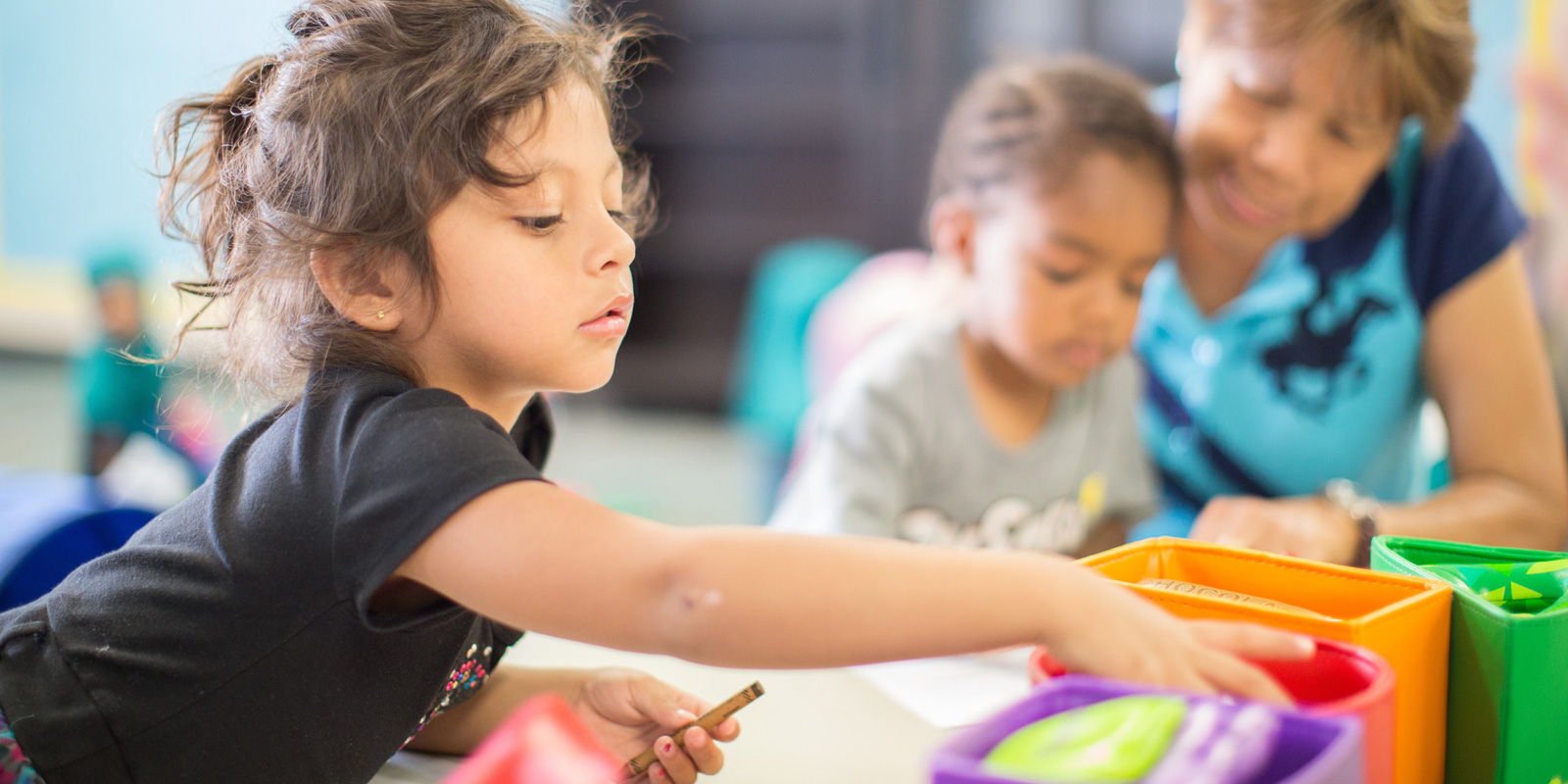Cokis is an immigrant mom and grandmother in Arizona. Her struggles with the trauma that she and one of her children endured were interfering with her ability to care for the children. The first few times she was approached by the Kith and Kin Project, an innovative program from the newly named Candelen (formerly the Association for Supportive Child Care) in Phoenix, Ariz, she declined, saying her daughter wasn’t interested. Cokis later admitted, “It wasn’t that she didn’t want to. It’s that I was uncomfortable because of all the stress that I was feeling.”
When she finally joined the group, she recalls, she got down on the floor and did activities side-by-side with her daughter. “The first time I went to Kith and Kin,” she says, “it was like coming home.” (Skip ahead to the last few seconds of this video to witness Cokis radiating joy.)
Cokis is one of the estimated 17.7 million informal caregivers in the United States. If parents of young children want to get to work, they need to find someone they trust to provide care. In most cases, this means someone they already know. Although Family, Friend and Neighbor (FFN) arrangements sometimes don’t even get a mention among the available options, it is “by far the most prevalent form of care for children from birth to school-age,” according to the Build Initiative, and researchers have found this to be the case regardless of family income or household structure. Build Initiative reports that grandparents are involved in providing child care for 20%-25% of children.
“It’s not a new thing,” says Sarah Ocampo, Candelen’s director of Family Support and Education. “This is how people have always made it work.”
FFN is almost always less costly and more flexible than child care centers, Head Start and other formal arrangements. During the pandemic, when centers closed, FFN made it possible for essential workers to perform essential functions. It continues to be the preferred option for parents working unusual hours and parents of children with special needs. In many cases, FFN is one element of a patchwork that resourceful parents assemble to make their schedules work.
Ocampo explains that FFN appeals to her state’s tribal population. In rural areas and on the reservation, she says, it’s sometimes the only option. In addition, many Arizona families prefer keeping siblings together, which isn’t always feasible in other settings. Arizona is also home to many immigrants, documented and otherwise. According to the American Immigration Council, about 13% of residents were born in another country, and 55% of these immigrants, like Cokis, come from Mexico.
The Kith and Kin Project provides training and resources for FFN child care providers through a 15-week series of two-hour sessions. Over 22 years, the team has developed ways of securing access, safety and quality for the providers it serves.
- Access. It’s hard to reach a child care provider who doesn’t think the term applies to her. “They didn’t deliberately go about starting a business,” says Ocampo. “They did it because they were asked, and they were available.” Many have raised children or siblings of their own, and Kith and Kin strives to honor their experience while providing culturally sensitive enrichment. The program entices providers with sidewalk chalk and other resources and materials. Staff develop relationships with churches and schools—institutions where trust is already established—and 85% of classes are in Spanish. Ocampo says morning seems to be the best time for the providers—after school-age children are dropped off.
- Safety. Some care providers who come from different cultures may not have extensive experience with the generally accepted safety standards in the U.S. That’s why Kith and Kin provides free fire extinguishers, cribs and other home safety items. Ocampo notes that some participants had never seen seatbelts before immigrating. Supports also include CPR and first aid training.
- Quality. According to Susannah Howe at New America, “Aside from FFN providers who are paid using child care subsidies and subject to [Child Care and Development Fund] regulations, FFN care is not regulated or tracked, so its quality is difficult to determine.” In Arizona, this stream of funding is generally not available, though a small amount comes through the Non-Certified Relative Provider program. Ocampo says the providers already see themselves as accomplished and confident in their role, but they welcome tips on nutrition, literacy, child development, discipline and safety. For example, Vroom—the brain science resource created by the Bezos Family Foundation—is embedded in all of their classes.
Since more than half of young children are in FFN care, it’s no wonder that Kith and Kin, the largest and most well-known program of its kind, is attracting attention from other states. Ocampo notes that emergency COVID funding through the Child Care & Development Block Grant is going toward expansion of supports like those that Kith and Kin have developed. “We are always happy to talk about the lessons we’ve learned,” she says.
Read More: FFN Resources
- Administration for Children & Families, Infant/Toddler Resource Guide
- Rob Grunewald and Ben Horowitz, Federal Reserve Bank of Minneapolis, What is family, friend, and neighbor child care?
- Home Grown. Supporting and Strengthening FFN Care (May 2021)
- Le, L. T., Lavin, K., Aquino, A. K., Shivers, E. M., Perry, D. F., & Horen, N. M., Center for Child and Human Development, Georgetown University (2018). What’s Working? A Study of the Intersection of Family, Friend, and Neighbor Networks and Early Childhood Mental Health Consultation: Summary of Key Findings.
- The National Center on Early Childhood Quality Assurance, Supporting License Exempt Family Child Care
- Oregon Department of Education’s Early Learning Division, Improving the Quality of Family, Friend, & Neighbor Care
- Amy Susman-Stillman and Patti L. Banghart, Quality in Family, Friend, and Neighbor Child Care Settings

Mark Swartz
Mark Swartz writes about efforts to improve early care and education as well as developments in the U.S. care economy. He lives in Maryland.



